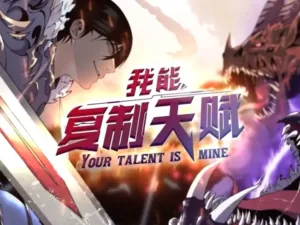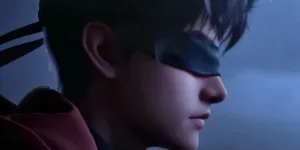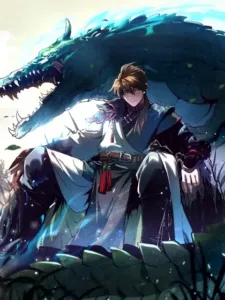donghua (Chinese animations) are becoming increasingly popular among Asian animation fans. With stunning visuals, rich storylines, and a strong influence from Chinese mythology and culture, they offer a unique experience worth exploring.
If you want to better understand what donghua are, their main genres and how they differ from Japanese anime, this guide is for you! In addition, we recommend that you check out this detailed guide on donghua adventure and cultivation to deepen your knowledge.
What is Donghua?
Donghua (动画) literally means “animation” in Chinese. However, outside of China, the term is used to refer specifically to Chinese animations with a style similar to that of Japanese anime.
They can be made in traditional 2D, CGI or even mix techniques, and are often adaptations of web novels and manhuas (Chinese manga).
Main Differences Between Donghua and Japanese Anime
Although they share similarities, there are notable differences between the two formats:
1. Cultural Influences and Narratives
Donghua draws heavily from Chinese culture and mythology, exploring concepts such as spiritual cultivation (Xianxia), martial arts fighting (Wuxia), and reincarnation.
Anime, meanwhile, is often influenced by Japanese folklore, modern pop culture, and a wider variety of Western genres.
2. Animation and Production Style
- Recent Donghua have invested heavily in CGI, resulting in realistic and detailed visuals, while traditional 2D animation is still more common in anime.
- Many Chinese productions use more fluid, cinematic movements, while Japanese anime often have detailed still frames to emphasize aesthetics.
3. Episode Release and Structure
Donghua often follow a weekly format, but with variations in episode length. Some may be 15 to 20 minutes long, while others exceed 30 minutes per episode, depending on the studio.
Unlike Japan, where seasons generally follow the anime calendar (spring, summer, fall, and winter), donghua can have irregular releases, with short seasons and long gaps in between.
Additionally, many Chinese productions are distributed directly on local streaming platforms such as Bilibili and Tencent Video, rather than being shown on television like traditional anime.
Popular Donghua Genres
Donghua cover a wide variety of genres, but some are especially popular:
1. Xianxia (仙侠) – Fantasy and Cultivation
Inspired by Taoism and Chinese mythology, this genre follows characters who train to achieve immortality and become spiritual cultivators, acquiring divine powers along the way.
📌 Examples:
- Grandmaster of Demonic Cultivation (Mo Dao Zu Shi)
- Battle Through the Heavens (Doupo Cangqiong)
2. Wuxia (武侠) – Martial Arts and Honor
Stories about warriors who master advanced martial arts techniques, fighting rival clans, and following codes of honor. Unlike Xianxia, Wuxia is more down-to-earth, without over-the-top supernatural elements.
📌 Examples:
- The Legend of Hei (Luo Xiao Hei Zhan Ji)
- The King’s Avatar (Quan Zhi Gao Shou)
3. Adventure and Fantasy
Donghua of this genre often mix action, comedy, and RPG elements, often featuring protagonists in magical worlds or reincarnation stories.
📌 Examples:
- Scissor Seven (Wu Liuqi)
- Fox Spirit Matchmaker (Huyao Xiao Hongniang)
4. Science Fiction and Cyberpunk
Although less common, China has invested in science fiction donghua, addressing themes such as artificial intelligence, virtual realities and futuristic civilizations.
📌 Examples:
- Ling Long: Incarnation
- The Three-Body Problem (San Ti)
5. Romance and Drama
Gripping stories that explore relationships, tragedies and forbidden love, often with a touch of mythology or fantasy.
📌 Examples:
- Link Click (Shiguang Dailiren)
- Heaven Official’s Blessing (Tian Guan Ci Fu)
Why Watch Donghua?
If you’re into anime, donghua can be a great alternative, featuring different narratives and stunning visuals. Here are a few reasons to give it a try:
✔️ Rich Chinese mythology and culture – Elements that differ greatly from Western and Japanese narratives.
✔️ Innovative visual effects – Stunning CGI productions and detailed artistic styles.
✔️ Engaging and expansive stories – Many donghua are based on long-form web novels, allowing for well-developed storylines.
If you want to discover even more about the world of donghua, check out this guide for beginners in donghua adventure and cultivation and dive into this fascinating world of Chinese animation!








